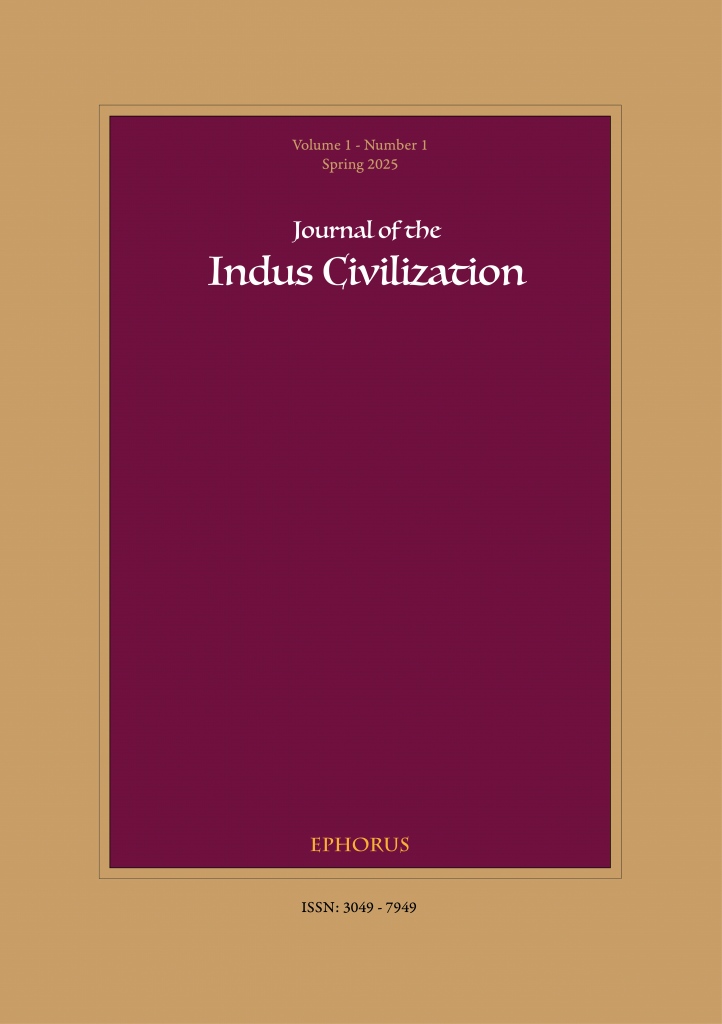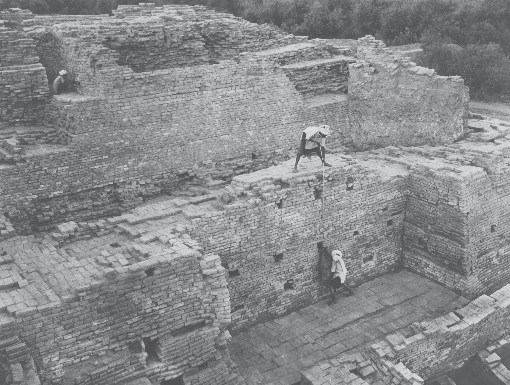

Journal of the Indus Civilization (J.I.C.)
ISSN: 3049-7949 (Print)
ISSN: 3049-7957 (Online)
Details to follow, including release date of the first issue.

Excavations at Mohenjo-Daro in Sind, Pakistan, supervised by Sir Mortimer Wheeler (a key figure in establishing the Institute of Archaeology of University College London in 1937) in 1950. Courtesy of Harappa.com.
In comparison to the many academic journals that address ancient Greece, Rome, Egypt, China, those of Mesopotamia and many other ancient civilizations, not a single journal that specialises in the Indus Civilization whose physical size was larger than that of Egypt and Mesopotamia combined, has been published. This dearth has done nothing to address the continued underrepresentation of this subject in universities across the world. Good work undertaken in journals in South Asia is either in some cases, not accessible to the wider world and often fails to reach a global readership. Many Western journals, are highly specialised and do not cater specifically for Indus Civilization studies. These journals are under pressure to accept articles on many subjects from scholars across the world. Consequently, many Indus Civilization articles submitted are not accepted for publication, despite their contribution. Some journals request payment for the publication of articles from their authors. This requirement is impractical for various scholars, arguably more so for those based in South Asia.
A unique and pioneering publication, this multidisciplinary journal provides a single platform for scholarship of the Indus Civilization. Articles address archaeology (theory and practice), art and architectural history, anthropology, sociology, educational studies, conservation, professionalism studies, including professional development, tourism and other relevant disciplines and specialisms. This multifaceted approach generates a substantive and eclectic corpus of knowledge and understanding for a diverse and global readership. A hands-on publication, interviews with experts provide readers with unique insight into notable and subtle issues. Reflective of its interdisciplinary strength, articles that address the considerable absence of theory in many publications about the Indus Civilization, including some of the key studies of the twentieth and early twentieth-first century written across the world, shall contribute much to this field. Archaeologists based in South Asian universities may also struggle to have some of their research published in archaeology journals in the West, not solely for financial reasons. This form of marginalisation, where it occurs, is a challenge that the journal addresses in addressing cognitive justice and pluralism and providing readers a varied range of articles by a diverse authorship. The journal also contributes to the agenda of archaeology of the Indus Civilization. This is further demonstrated in also seeking out articles that combine approaches such as field and landscape archaeology with Indus Civilization studies, thereby expanding the scope of the latter in content and approach, yet also its appeal to the broader world of archaeology.
Other issues that the journal addresses include evidence and its analysis of the interaction of people and sites of this civilization with that of others, whether Dilmun, those of Mesopotamia or elsewhere. Although this subject has received some attention in relation to the distribution of seals and pottery, there remains much to address concerning this subject and the use of adequate paradigms and frameworks of analysis. A similar point may be made of the need to engage in comparative studies with Egypt and Mesopotamia and other cultures and civilizations of the same and different periods, such as Early Historic India, touched on by the author of this brief in his study of bricks of city walls of Indus sites. A hands-on strategy to also mobilise and benefit the public sphere, both in the West and South Asia, in addition to the wider world of the subject of the Indus Civilization is integrated into this project. The journal provides an impartial and scientific basis for scholarship of archaeology that is bereft of contemporary politics and ideology that may prejudice or skew subject matter and argument. Reflective of the limited knowledge and understanding of early finds during the twentieth century, what is referred to by default as the Indus Civilization spanned a much broader area than sites of this civilization in either of the two South Asian countries, as have many historical periods and polities of this region, to the twentieth century. In the absence of firm knowledge of the language and due to the scope of the material culture identified thus far, modern-day scholars are unable to highlight the actual name and other vital issues concerning what is referred to today as the Indus Civilization. How archaeologists have engaged with excavations and studies of the archaeology of the Indus Civilization is also examined, as are earlier interactions and thoughts of some of the sites of this civilization in preceding centuries. Therefore, as studies of this civilization face considerable challenges that are absent in studies of ancient Egypt and Mesopotamia for the same period, assumptions must not be made, nor arbitrary claims of physical limits and other issues concerning the Indus or Harappan Civilization.
The journal is committed to acknowledging sites of this civilization of all sizes, periods and subperiods and their interrelationships, where evident, in both countries with equal respect, as the archaeological record and cultural heritage must be shared, also with the wider world. In addition to articles, relevant notices and information are disseminated to both a specialist and a broader readership. Conceptualised during the past several years, the journal is an exciting publication, project and forum that addresses local and global scales in its coverage and dissemination at a time of considerable significance as some Indus Civilization sites face great challenges due to their rapid decay amidst human and natural impact. Many sites of this ancient civilization have never been excavated nor, in some cases, subject to non-intrusive survey. These issues are reported on and analysed in the journal that seeks to provide a systematic engagement of the various challenges that Indus Civilization archaeology and studies face in the twenty-first century amidst the rapid growth of populations and economies in both Pakistan and India, and the globalised world. The relevance of Artificial Intelligence (AI) shall also be examined and opportunities and challenges outlined and discussed in this dynamic publication that is supported with maps, photographs, drawings, charts and tables.
Further information to follow.